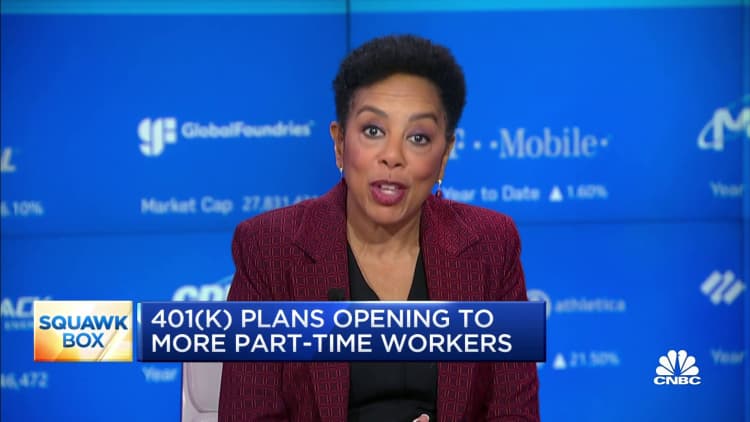
After falling sharply last year, retirement account balances bounced back in the beginning of 2023 — but slumped again in the most recent quarter.
The average 401(k) balance fell 4% to $107,700 in the third quarter, due, in part, to volatile market conditions, according to a recent report by Fidelity, the nation's largest provider of 401(k) plans. The financial services firm handles more than 35 million retirement accounts in total.
The average individual retirement account balance was also down nearly 4%, to $109,600 from $113,800, in the second quarter of 2023.
More from Personal Finance:
Can money buy happiness? 60% of adults say yes
The 'radically different' wage growth forecast in 2024
Cooling job market no reason for panic yet, economists say
Despite market turbulence, the total savings rate for the third quarter, including employee and employer 401(k) contributions, held steady at 13.9%, in line with last year. That's just shy of Fidelity's recommended savings rate of 15%.
There were, however, other signs of trouble.
'Last resort' 401(k) hardship withdrawals rise
In extreme circumstances, savers can take a hardship distribution without incurring a 10% early withdrawal fee if there is evidence the money is being used to cover a qualified hardship, such as medical expenses, loss due to natural disasters or to buy a primary residence or prevent eviction or foreclosure.
The share of participants who tap such hardship withdrawals is on the rise, according to reports by Fidelity Investments and Bank of America — largely to avoid a foreclosure or eviction or to cover medical expenses, Fidelity found.
Bank of America's recent participant pulse report showed that the number of 401(k) plan participants taking hardship withdrawals was up 13% from the second quarter and 27% compared with the first quarter of the year — with the average withdrawal amount just over $5,000.
Considering record high credit card debt, a declining personal savings rate and more than half of adults living paycheck to paycheck, the uptick is an indication that some households are struggling in the face of inflation and the increased cost of living, said Mike Shamrell, vice president of thought leadership for Fidelity's workplace investing.
Still, hardship withdrawals should be "your choice of last resort," cautioned Joe Buhrmann, senior financial planning consultant at eMoney Advisor.
Most financial experts advise against raiding a 401(k) since you'll be forfeiting the power of compound interest.
"'Leakage' from plan accounts through 401(k) loans and withdrawals can have outsized effects on retirement readiness," said Sharon Carson, retirement strategist at J.P. Morgan Asset Management.
Explore your options before tapping your 401(k)
From tapping your home equity to taking out a personal loan, households should consider what resources are available in times of financial stress before borrowing against a retirement account.
However, in some cases, a 401(k) loan may be preferable to other alternatives, said Fidelity's Shamrell. Federal law allows workers to borrow up to 50% of their account balance, or $50,000, whichever is less, without penalty as long as the loan is repaid within five years. There may be other conditions as well, and if you're laid off or find a new job, most employers will require your outstanding balance be repaid in a shorter time frame.
"There are times where the loans may be a more valid direction, as opposed to putting that on your credit card," Shamrell said.
And in other situations, especially for cash-strapped consumers living paycheck to paycheck, it may even make more sense to cover the cost of an emergency all at once with a hardship withdrawal, rather than tap a loan that then gets deducted from your take-home pay, he added.


